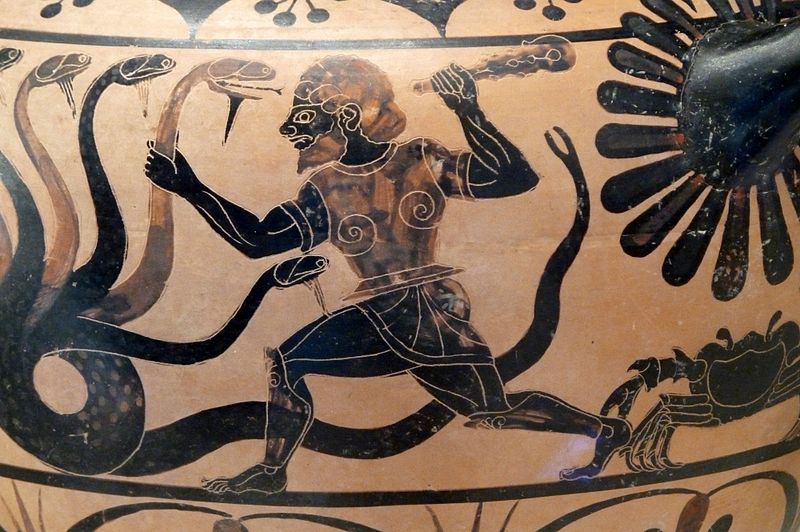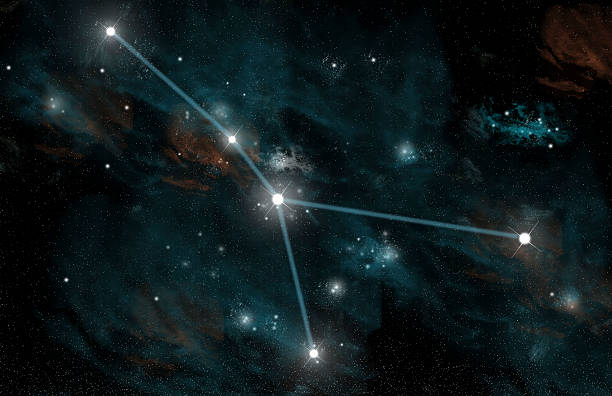One of the most interesting constellations that has been fascinating stargazers for thousands of years is the Cancer constellation, the celestial crab. In this guide we’ll delve into the Cancer constellation, from its mythological beginnings to its modern day astronomy.
Facts, Location, Map
Cancer, Latin for crab, is one of the 12 zodiac constellations and has been recognized by many cultures throughout history. This faint constellation is the 31st largest in the sky covering 506 square degrees.
Facts:
- Constellation family: Zodiac
- Right ascension: 8h 25m to 9h 22m
- Declination: +28° 36′ to +6° 22′
- Visible between latitudes: +90° to -60°
- Best seen: March (9 p.m.)
- Pronunciation: /ˈkænsər/ (KAN-sər)
- Genitive form: Cancri (/ˈkæŋkraɪ/ KANG-kry)
- IAU abbreviation: Cnc
Cancer is in the northern hemisphere, between Gemini to the west and Leo to the east. It’s not the brightest constellation but its unique shape and history make it a favourite among astronomy enthusiasts.
To see Cancer in the sky, look for a faint inverted Y-shaped group of stars. It’s easiest to find by first finding the constellations of Gemini and Leo and then looking for the fainter stars between them.
Mythology and History

The Cancer constellation has a long history of mythology, mainly from Greek and Roman sources. According to legend the crab was put in the sky by Hera as a reward for its loyalty during Hercules’ fight with the Hydra.
In Greek mythology, while Hercules was fighting the Hydra, Hera sent a crab to distract and annoy him. Hercules squashed the crab under his foot, but Hera rewarded its bravery by putting it in the stars.
Throughout history different cultures have given this constellation different meanings:
- Ancient Egyptians saw it as the scarab beetle, a symbol of immortality and rebirth.
- In Babylonian astronomy it was called MUL.AL.LUL, or “the Crayfish.”
- Chinese astronomy divided Cancer’s stars into two constellations: Gui (Ghost) and Liu (Willow).
In astrology Cancer is the 4th sign of the zodiac, water element and ruled by the Moon. People born between June 21 and July 22 are under this sign which is often described as emotional, intuitive and nurturing.
How to Find Cancer the Crab

Best time to see Cancer is late winter to early spring in the Northern Hemisphere. Since it is dificult to locate due to it’s dim nature we locate it using other visible constellations. Follow these steps to find this tough to see constellation:
To find faint constellations like Cancer you need to use more visible ones as guides. Here’s a step by step guide to find Cancer the Crab in the night sky:
Step 1: Find Orion
- Find Orion: Start with the constellation Orion which is visible in the night sky in late winter.
- Find Rigel and Betelgeuse: Locate the bright blue supergiant star Rigel in the southwest corner of Orion and the red supergiant star Betelgeuse in the opposite corner.
Step 2: Use Orion to Find Gemini
- Draw a Line from Orion: Draw an imaginary line from Rigel through Betelgeuse.
- Find Gemini: Extend the line twice the distance beyond Betelgeuse to reach the bright stars Castor and Pollux in Gemini. Castor is the star to the north.
Step 3: Find the Plough and Leo
- Find the Plough (Big Dipper): Look for the Plough (or Saucepan) pattern, which should be half way up the sky above the northeast horizon before midnight.
- Extend from the Plough to Leo: Extend the side of the pan nearest the handle to the right until you reach the bright star Regulus in Leo.
- Find the Sickle: Above Regulus find the backwards question mark star pattern known as the Sickle.
Step 4: Find the Beehive Cluster
- Draw an Imaginary Line: Under a clear, dark sky look for a mistiness slightly below the mid-point of an imaginary line connecting Castor to Regulus.
- Find the Beehive Cluster (M44): This mistiness is the Beehive Cluster (M44), an open cluster in the heart of Cancer. Use binoculars for a better view.
Step 5: Find Stars in Cancer
- Find the Manger (Praesepe): The Beehive Cluster (M44) is also known as Praesepe, meaning ‘manger,’ and is framed by four faint stars.
- The two brighter stars to the east are Asellus Borealis (Northern Donkey) and Asellus Australis (Southern Donkey).
Step 6: Find the Shape of Cancer
- Look for the Inverted-Y: The rest of Cancer forms an inverted-Y shape, none of its stars are bright.
- The open end of the Y is south of M44, marked by Acubens to the southeast and Altarf to the southwest.
Step 7: Use Binoculars for Deep Sky Objects
- Find M67: Using binoculars or a small telescope find the open cluster M67 west of Acubens. M67 is fainter and smaller than M44 as it’s much farther away (almost 3,000 light-years compared to 610 light-years for M44).
Stargazing tips
- Use a star chart or astronomy app to help you.
- Give your eyes 20 minutes to adjust to the dark.
- Get to a high elevation location if possible, as views of the stars improve the higher up you go.
- Join a local astronomy club for guided viewing.
Cancer Constellation Stars
![By IAU and Sky & Telescope magazine (Roger Sinnott & Rick Fienberg) - [1], CC BY 3.0, https://commons.wikimedia.org/w/index.php?curid=15406241](https://thespacevortex.com/wp-content/uploads/2023/12/Cancer_IAU-1024x965.webp)
The Cancer constellation may not have the brightest stars in the sky but it has some notable ones. Let’s look at some of the major stars in this constellation:
Acubens – α Cancri (Alpha Cancri)
Acubens also known as Alpha Cancri is the 4th brightest star in Cancer. Despite being an alpha star it’s not the brightest in the constellation. Acubens is a multiple star system 174 light years away from Earth. Its name comes from the Arabic “al-zubanah” meaning “the claws” of the crab.
Tarf – β Cancri (Beta Cancri)
Tarf or Beta Cancri is the 2nd brightest star in Cancer. It’s an orange giant 290 light years away from Earth. The name “Tarf” comes from the Arabic word for “end” or “edge” meaning the foot of the crab.
Asellus Australis – δ Cancri (Delta Cancri)
Asellus Australis is the brightest star in Cancer despite being a delta star. It’s an orange giant 136 light years away. The name means “southern donkey colt” in Latin meaning its position in the constellation.
Asellus Borealis – γ Cancri (Gamma Cancri)
Asellus Borealis is another star in Cancer 158 light years away. Its name means “northern donkey colt” in Latin, companion to Asellus Australis.
55 Cancri
55 Cancri is a binary star system 41 light years away. It’s notable because it has 5 known exoplanets and is a target in the search for habitable worlds.
Tegmine – ζ Cancri (Zeta Cancri)
Tegmine is a multiple star system 83 light years away. It’s two binary pairs and a great target for amateur astronomers with telescopes.
λ Cancri (Lambda Cancri)
Lambda Cancri is a blue-white main sequence star 419 light years away. Not as bright as some of the others but part of the constellation.
ξ Cancri (Xi Cancri)
Xi Cancri is a binary star system 381 light years away. Two stars orbiting each other with a period of 4.66 years.
Deep Sky Objects in Cancer
Cancer may be a faint constellation but it has some amazing deep sky objects that are popular among amateur and professional astronomers:
Beehive Cluster (Praesepe, Messier 44, M44, NGC 2632)
The Beehive Cluster, also known as Praesepe or M44 is the most prominent feature of Cancer. This open cluster has around 1,000 stars and is visible to the naked eye as a fuzzy patch. About 577 light years away, it’s the nearest open cluster to Earth.
Fun facts about the Beehive Cluster:
- It covers an area of about 1.5 degrees in the sky, that’s three full moons side by side.
- Ancient Greeks and Romans saw it as a manger from which two donkeys, represented by nearby stars, were eating.
- It’s about 600 million years old.
Messier 67 (M67, NGC 2682)
M67 is another open cluster in Cancer, about 2,610 light years away. It’s one of the oldest known open clusters, 3.6 to 4 billion years old. M67 has about 500 stars and is a popular target for studying stellar evolution due to its age and proximity.
NGC 2775 (Caldwell 48)
NGC 2775 is a spiral galaxy in Cancer, about 55.5 million light years away. It’s known for its smooth, featureless central bulge and tightly wound spiral arms, making it a unique galaxy.
NGC 2535 and NGC 2536
This pair of galaxies, also known as Arp 82, is a beautiful sight for astronomers. NGC 2535 is the larger spiral galaxy and NGC 2536 is the smaller, distorted companion. Their gravitational interaction has created the stunning tidal tails and bridges between the two galaxies.
NGC 2608 (Arp 12)
NGC 2608 is a barred spiral galaxy in Cancer, it’s asymmetrical. It’s in the Atlas of Peculiar Galaxies, a catalog of weird and wonderful galaxies by Halton Arp.
Cancer Exoplanets

Cancer has been a busy constellation in the exoplanet hunt with several notable discoveries:
- 55 Cancri system: This system has five known exoplanets including 55 Cancri e, a super-Earth that orbits super close to its star.
- HAT-P-30: This star has a hot Jupiter, HAT-P-30b, discovered in 2011.
- XO-1: Another star in Cancer with a hot Jupiter, XO-1b, discovered in 2006.
These exoplanetary systems are adding to our knowledge of planetary formation and life beyond our solar system. The variety of planets in Cancer, from hot Jupiters to potentially habitable super-Earths, shows we need to keep exploring and studying this constellation.
Cancer in Modern Astronomy
Recent astronomical research has continued to unveil the secrets of the Cancer constellation:
- Exoplanet discoveries: Ongoing studies of the 55 Cancri system and other stars in Cancer contribute to our understanding of planetary systems.
- Stellar evolution: The old open cluster M67 serves as a crucial laboratory for studying the life cycles of stars.
- Galactic interactions: Observations of interacting galaxies like NGC 2535 and NGC 2536 help astronomers understand galactic evolution and dynamics.
- Dark matter research: Like all galaxies, those in Cancer play a role in our ongoing efforts to understand dark matter and its effects on cosmic structures.
Modern technology, including advanced ground-based telescopes and space observatories like the Hubble Space Telescope and the James Webb Space Telescope, continues to reveal new details about the objects in Cancer, from the composition of exoplanet atmospheres to the intricate structures of distant galaxies.
Conlcusion
The Cancer constellation may be faint but it’s a treasure trove of astronomical goodies. From its mythological roots as a crab in Greek legend to its role in modern exoplanet discoveries, Cancer has a bit of everything. Key features include the bright stars Acubens and Tarf, the naked eye Beehive Cluster (M44), the ancient open cluster M67 and the 55 Cancri star system with 5 known exoplanets. Best observed in late winter and early spring, Cancer has something for amateur and professional astronomers alike to study and observe.
Remember, astronomy is a never ending journey. As technology advances and we learn more, we’ll find more hidden treasures in the Cancer constellation. Stay curious, keep looking and never stop asking questions of the sky above.
